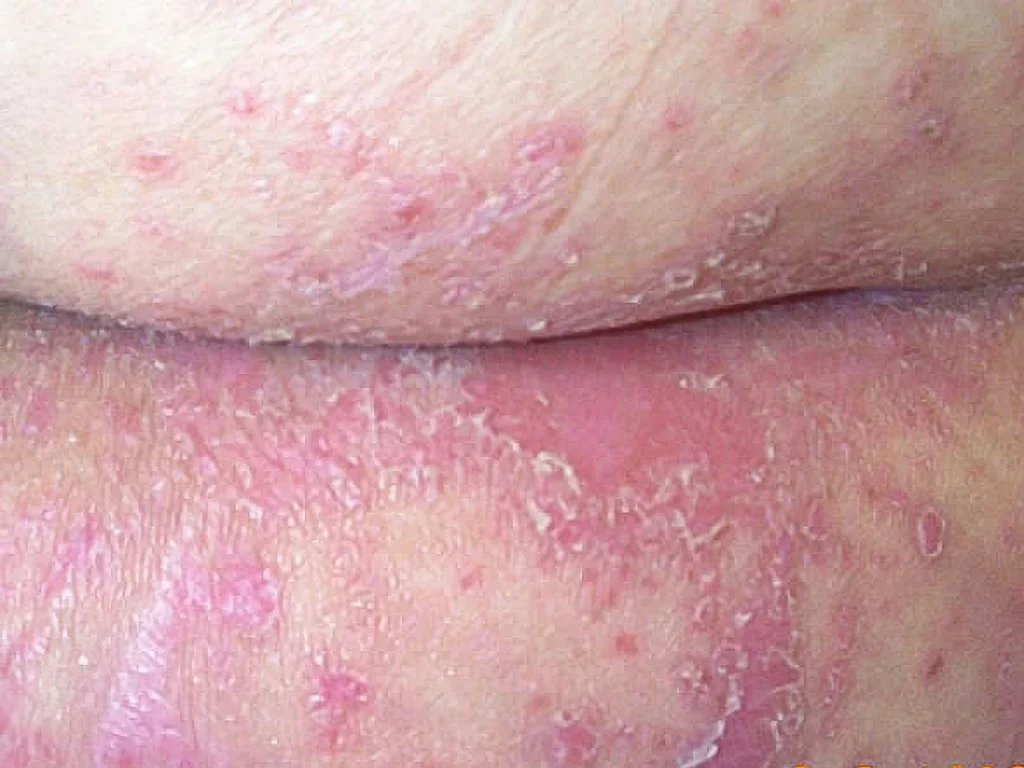Learn about candidiasis (yeast infection) in women — its causes, symptoms, treatments, and effective prevention strategies for maintaining optimal vaginal health.
Candidiasis, commonly known as a yeast infection, is one of the most frequent fungal infections affecting women worldwide. It occurs when Candida albicans — a naturally occurring fungus — overgrows in the body, particularly in warm and moist areas like the vagina, mouth, or skin folds. While it is not typically dangerous, untreated or recurrent infections can significantly affect a woman’s comfort, confidence, and overall reproductive health.
Understanding what causes candidiasis, how to identify its symptoms, and the best prevention and treatment strategies is essential for women of all ages.
What Is Candidiasis (Yeast Infection)?
Candidiasis is an infection caused by Candida species, most often Candida albicans. This fungus normally lives in the body without causing harm, but certain conditions can upset the natural balance of bacteria and yeast. When this balance is disturbed, Candida can multiply excessively, leading to infection.
The infection can occur in different areas of the body:
-
Vaginal Candidiasis (Vulvovaginal Candidiasis): The most common form among women, affecting the vaginal area.
-
Oral Thrush: Affects the mouth, tongue, and throat.
-
Cutaneous Candidiasis: Occurs in skin folds or under the breasts, especially in warm, moist environments.
-
Invasive Candidiasis: A severe form that can enter the bloodstream and spread to internal organs (more common in people with weakened immune systems).
Common Causes and Risk Factors
Several factors can increase the risk of developing a yeast infection:
-
Hormonal Changes – Pregnancy, menstrual cycles, and menopause can alter vaginal pH levels, creating a favorable environment for yeast growth.
-
Antibiotic Use – Antibiotics disrupt the balance of “good bacteria,” allowing yeast to grow unchecked.
-
Weakened Immune System – Conditions such as HIV, diabetes, or chronic stress can reduce the body’s natural defenses.
-
High Estrogen Levels – Found in hormonal birth control or hormone replacement therapy.
-
Tight or Non-Breathable Clothing – Traps moisture and heat, encouraging fungal growth.
-
High Sugar Intake – Yeast feeds on sugar; diets high in refined carbohydrates can worsen infections.
Signs and Symptoms of Candidiasis in Women
Candidiasis symptoms can range from mild discomfort to intense irritation. Common signs include:
-
Persistent itching and burning in the vaginal or vulvar area
-
Thick, white discharge resembling cottage cheese
-
Redness, swelling, or soreness around the vulva
-
Pain during urination or sexual intercourse
-
Cracked or dry skin in affected areas (for skin infections)
In some cases, recurrent infections (four or more per year) indicate chronic candidiasis, which requires medical evaluation for underlying causes like diabetes or hormonal imbalance.
Diagnosis of Candidiasis
Healthcare professionals typically diagnose candidiasis through:
-
Physical examination of affected areas
-
Microscopic testing of vaginal discharge or skin samples
-
Culture tests to identify the specific Candida species
-
pH testing to rule out bacterial vaginosis or other infections
Accurate diagnosis is crucial because the symptoms of candidiasis can overlap with other vaginal conditions.
Treatment Options for Candidiasis
Treatment depends on the severity and frequency of the infection.
1. Over-the-Counter (OTC) Antifungal Treatments:
-
Creams, ointments, and suppositories containing clotrimazole, miconazole, or tioconazole.
-
Usually applied for 1–7 days depending on the product.
2. Prescription Medications:
-
Fluconazole (Diflucan): A single-dose oral antifungal pill effective against most yeast infections.
-
Topical antifungal creams or stronger oral medications for recurrent or severe cases.
3. Home and Natural Remedies (Complementary Approaches):
-
Probiotics (Lactobacillus): Help restore vaginal bacterial balance.
-
Coconut oil and tea tree oil: Natural antifungal properties (should be used cautiously and diluted).
-
Good hygiene and breathable clothing: Prevent recurrence.
Preventing Candidiasis: Healthy Habits for Women
Prevention is often the most effective approach to managing yeast infections. Consider the following habits:
-
Wear breathable cotton underwear and avoid tight-fitting clothes.
-
Keep the vaginal area dry; change out of wet clothes promptly.
-
Avoid scented soaps, douches, and sprays, which disrupt natural pH balance.
-
Manage blood sugar levels if diabetic.
-
Maintain a balanced diet rich in probiotics and low in refined sugars.
-
Use antibiotics only when prescribed and necessary.
Recurrent Yeast Infections: When to See a Doctor
If infections occur frequently or don’t improve after treatment, seek medical advice. Chronic candidiasis may be a sign of:
-
Uncontrolled diabetes
-
Immunodeficiency conditions
-
Antifungal resistance
A gynecologist may perform tests to determine the underlying cause and create a long-term treatment plan.
Possible Complications of Untreated Candidiasis
While yeast infections are generally mild, untreated or recurrent cases can lead to:
-
Chronic vaginal irritation and discomfort
-
Secondary bacterial infections
-
Increased risk of pelvic inflammatory disease (PID)
-
Pregnancy complications such as early labor (rare but possible)
-
Invasive candidiasis in immunocompromised individuals
FAQs about Candidiasis (Yeast Infection)
1. Can I get a yeast infection from my partner?
Yes, although it’s uncommon, yeast infections can be transmitted through sexual contact. Partners may need treatment if symptoms appear.
2. Is it safe to self-treat yeast infections?
For mild, occasional infections, over-the-counter antifungal creams are safe. However, recurring infections should be evaluated by a healthcare provider.
3. Can diet help prevent candidiasis?
Yes, reducing sugar intake and eating probiotic-rich foods like yogurt can help maintain healthy vaginal flora.
4. How long does treatment take?
Most mild infections clear up within a week with proper treatment. Severe or recurrent cases may take longer.
5. Can stress cause yeast infections?
Indirectly, yes. Chronic stress weakens the immune system, making the body more vulnerable to fungal overgrowth.
Conclusion: Protecting Women’s Health through Awareness and Prevention
Candidiasis is a manageable condition, but awareness and proactive care are key to preventing discomfort and recurrence. Women should pay attention to their body’s signals, maintain good hygiene, and support hormonal and immune balance through a healthy diet and lifestyle.
Regular gynecological check-ups can help detect early signs of infection and ensure proper treatment before complications develop. With the right approach, every woman can maintain a healthy balance and prevent candidiasis from affecting her quality of life.




Pingback: Common Types of Fungal Infections in Women and Prevention
Pingback: Intertrigo (Skin Fold Fungal Infection): Causes, Treatment, and Prevention